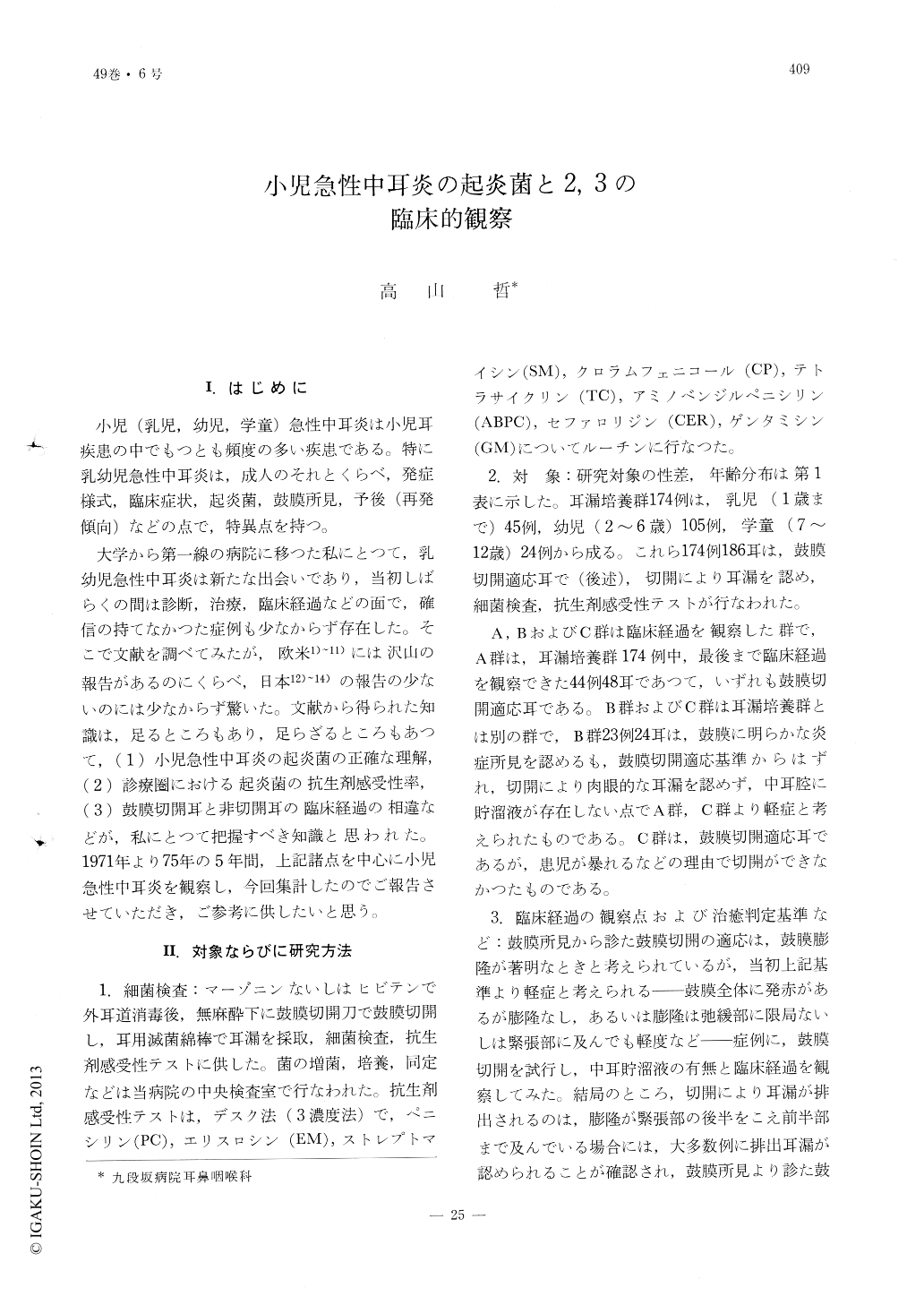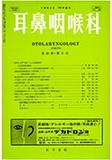Japanese
English
- 有料閲覧
- Abstract 文献概要
- 1ページ目 Look Inside
I.はじめに
小児(乳児,幼児,学童)急性中耳炎は小児耳疾患の中でもつとも頻度の多い疾患である。特に乳幼児急性中耳炎は,成人のそれとくらべ,発症様式,臨床症状,起炎菌,鼓膜所見,予後(再発傾向)などの点で,特異点を持つ。
大学から第一線の病院に移つた私にとつて,乳幼児急性中耳炎は新たな出会いであり,当初しばらくの間は診断,治療,臨床経過などの面で,確信の持てなかつた症例も少なからず存在した。そこで文献を調べてみたが,欧米1)〜11)には沢山の報告があるのにくらべ,日本12)〜14)の報告の少ないのには少なからず驚いた。文献から得られた知識は,足るところもあり,足らざるところもあつて,(1)小児急性中耳炎の起炎菌の正確な理解,(2)診療圏における起炎菌の抗生剤感受性率,(3)鼓膜切開耳と非切開耳の臨床経過の相違などが,私にとつて把握すべき知識と思われた。1971年より75年の5年間,上記諸点を中心に小児急性中耳炎を観察し,今回集計したのでご報告させていただき,ご参考に供したいと思う。
The middle ear discharges from acute otitis media were cultured and the antibiotic sensitivity of the pathogens were tested. A marked bulging ear drum was diagnosed as an indication for paracentesis. The discharge following this procedure was cultured in 174 cases among the children whose ages ranged from 0 to 12 years. In this manner 186 ear cultures were obtained ; 14 ears were sterile while 172 ears showed positive pathogens. The bacterial distributions were found to be diplococcus pneumoniae, 30. 6% ; staphylococcus aureus, 6. 6% ; group A beta streptococcus, 13. 9% ; hemophilis influenza, 7. 5% ; and,neisseria catarrhalis, 2. 1%. Judging from the antibiotic sensitivity of the pathogens, the relation between the causative organism and the age of the patients and the characteristic peculiarities of the antibiotics, cephalosporine and AB-PC were considered to be the optimal antibiotics to be employed among children in treatment of acute otitis media.
The effects of paracentesis on the clinical course of acute otitis media were investigated. There was no difference in the recovery time in acute otitis media whether paracentesis was performed or not. However, there were more ears showing retraction of the ear drum at the time of recovery, 57. 5%, than those with paracentesis, 33. 3%, Five of these retracted ear reverted to secretory otitis. In this era of antibiotics paracentesis appear to have no therapeutic advantage in the treatment of otitis media.
However, paracentesis should be performed in order to obtain information on the causative pathogens and their sensitivities to particular antibiotics.

Copyright © 1977, Igaku-Shoin Ltd. All rights reserved.


